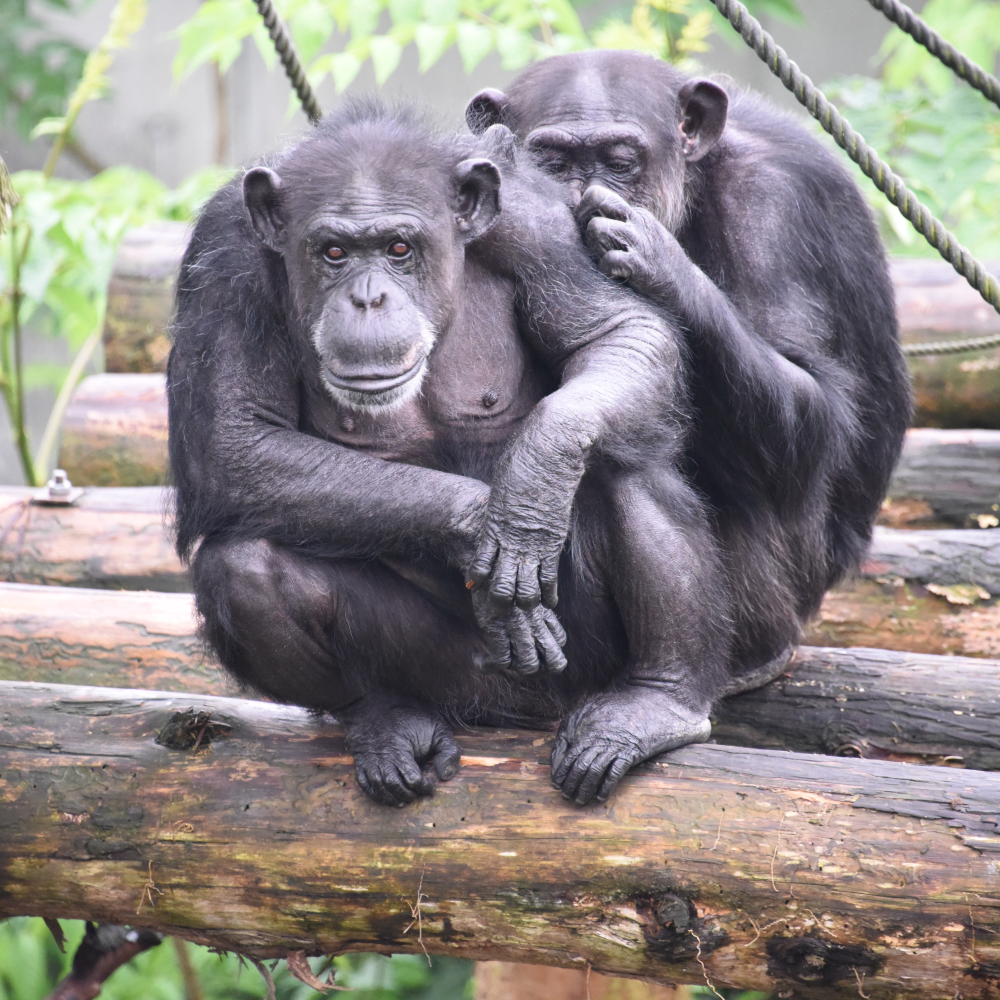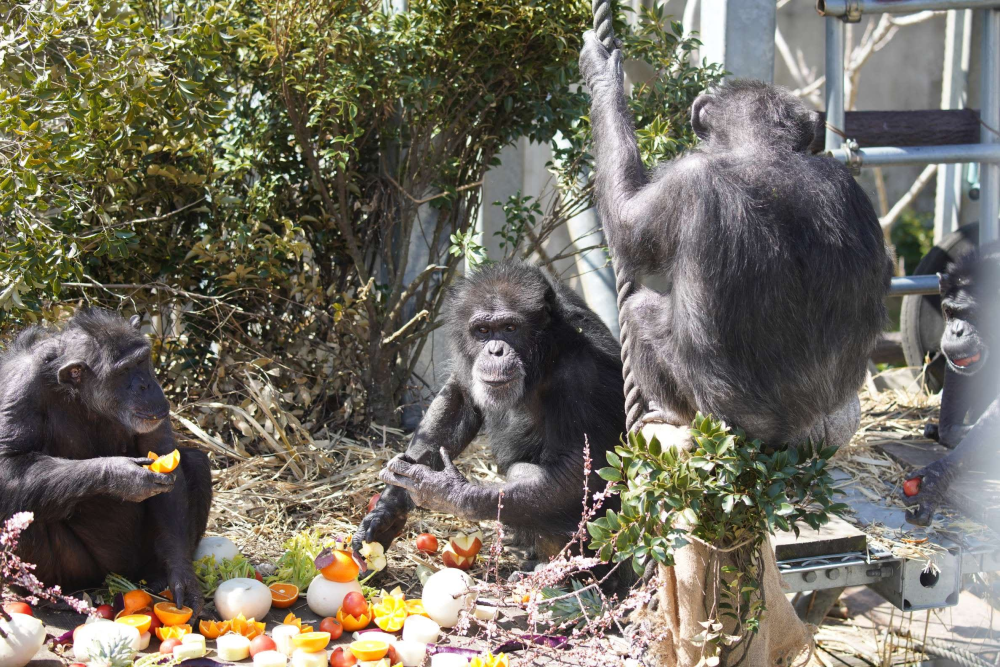In chimpanzees, peeing is contagious. That’s the surprising conclusion reached by scientists at Kyoto University who described it as “an unexpected and fascinating result”. They conducted observational studies of chimpanzees at a sanctuary and saw that not only did they exhibit contagious urination, but that it was also more likely among individuals with lower dominance and those physically closest to the instigating urinator.
ADVERTISEMENT GO AD FREE
Sound familiar? You’re not alone.
The act of urination in one individual can trigger the decision to urinate in others
Ena Onishi
“Humans and non-human animals share many social phenomena associated with group living – in other words, we are greatly influenced by the presence of others, even in mundane activities,” said first author and doctoral student at Kyoto University Wildlife Research Center Ena Onishi to IFLScience. “For example, in both chimpanzees and humans, behaviors like yawning, walking, rhythmic tapping, and even pupil size are known to be contagious.”
“Our study aligns with this context, showing that the act of urination in one individual can trigger the decision to urinate in others. Understanding the intriguing relationship between physiological responses and group living may offer valuable insights into the deeply rooted systems that social animals have adapted to maintain group cohesion.”
Contagious peeing (AKA, one goes, we all go) is so prevalent among humans that it’s even earned its own Italian proverb: chi non piscia in compagnia o è un ladro o è una spia, or “whoever doesn’t pee in company is either a thief or a spy”. In Japan, it’s known as 連れション (Tsureshon), and it gets a hat-tip in art and culture spanning centuries. It got some scientists wondering: could something so widespread have evolutionary roots?
Our study with chimpanzees clearly shows that they share some similarities in this phenomenon
Shinya Yamamoto
Scientists at Kyoto University noticed that chimpanzees at the Kumamoto Sanctuary seemed to pee around about the same time, so decided to look into it. They conducted 600 hours of observational research, capturing 1,328 urination events and giving them plenty of data to work with.
Their results showed that urination events were significantly more synchronized than you’d expect if the chimps were just peeing randomly, and that contagious urination was more likely among those that were physically closest to the instigating urinator. The social rank of the initiator didn’t seem to factor in to how likely it was to spread, but individuals with lower dominance were more likely to pee if someone else did.

Two female chimpanzees at the Kumamoto Sanctuary.
Image credit: Kumamoto Sanctuary
“As for why this pattern appeared only in low-ranking individuals, there are several possibilities,” said Onishi. “One is that high-ranking individuals might indeed influence others’ urination more frequently, but this effect may not have been detected in our data due to sample size limitations. If this is the case, it could suggest a form of hidden leadership, where high-ranking individuals play a role in synchronizing group behavior. This would be a significant finding in understanding group cohesion and decision-making dynamics.”
“Another possibility is that low-ranking individuals have an attention bias, meaning they are more likely to notice and respond to the behaviors of others, including urination. This could be due to their heightened vigilance in social settings.”
This is the first study to investigate contagious urination in animals, including humans
Shinya Yamamoto
“Lastly, it might also relate to traits associated with low rank, such as differences in personality or greater motivation for affiliation. These interpretations open exciting avenues for further research into the social and psychological mechanisms underlying this behavior.”
As for why contagious peeing might emerge in an animal group, it’s possible this kind of “state-matching” could encourage group cohesion by facilitating collective readiness (nobody wants to get caught short when a rival troop rolls into town). Mimicry may also reinforce social bonds (like in contagious yawning), or it could even serve as an anti-predator strategy by concentrating urine in one area and reducing the risk of anybody picking up on the group’s scent. These are all ideas that need further investigation, but it’s a pivotal moment for the function of peeing in chimps, humans, and perhaps even other primates.

A male chimpanzee (center) and female chimpanzees at the Kumamoto Sanctuary.
Image credit: Kumamoto Sanctuary
“This is the first study to investigate contagious urination in animals, including humans,” said co-author and Associate Professor at the Kyoto University Institute for Advanced Study Dr Shinya Yamamoto to IFLScience. “In humans, we know that our decision to urinate is influenced by social contexts that lead us to urinate simultaneously with others, and that this simultaneous urination could also promote further social bonding between them through this joint activity.”
ADVERTISEMENT GO AD FREE
“Our study with chimpanzees clearly shows that they share some similarities in this phenomenon, suggesting the deep evolutionary origin of contagious urination. This study also revealed some possible differences between chimpanzees and humans: chimpanzee urination was influenced by dominance relationships between initiators and followers, but not by affiliative relationships between them.”
It’s possible, then, that there may be key differences between the two species that weren’t captured in this investigation, and the team hopes to further investigate contagious urination from a broader comparative perspective. Key goals include studying other chimpanzee groups, studying wild animals, and comparing it across other ape species such as bonobos.
“However, further exploration requires collective effort, and we cannot pursue this alone,” added Onishi. “I hope my study inspires others to look at urination in different animals or explore this phenomenon in greater detail. I’m really looking forward to seeing where this line of research goes in the future!”
So, who’s up for it?
ADVERTISEMENT GO AD FREE
The study is published in the journal Current Biology.
Source Link: Contagious Urination Confirmed In Chimps For The First Time, Surprising Scientists